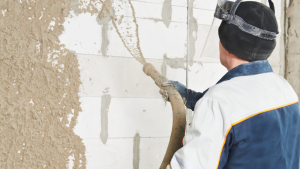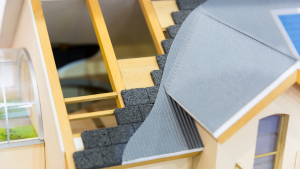Roof repair is usually off most people’s spring to-do list, yard chores and spring cleaning. However, as winter draws to a close, your roof should be at the top of your list of home repair needs.
Winter weather may damage your roof significantly, and severe damage may jeopardize structural integrity. If you want your roof to last over the winter, you need to give it some post-winter maintenance.
Here are seven roof care suggestions to help you withstand the winter storms and prepare your roof for spring.
1. Have Your Roof Inspected
After winter, you should first have a professional roofer inspect your roof for damage. While you can inspect your roof, it may have subtle deterioration symptoms that an inexperienced eye may miss. Furthermore, rooftops are damp and slick after the winter, making climbing on the roof unsafe.
To be safe, have someone with expertise evaluate your roof and make a list of all the repairs that are required.
2. Examine the inside for signs of water damage.
When your roof suffers water damage, you may have difficulty detecting it from the outside. On the other hand, your interiors may exhibit water damage symptoms. Look for water spots on your ceiling. These may take the form of dark ring-like stains. You can also search for bubbling or flaking paint on your walls.
Request repairs from your contractor as soon as you see any evidence of water damage.
3. Vacuum Your Gutters
Cleaning your gutters is essential for preventive maintenance before spring. Debris may have clogged up your gutters throughout the winter months, making it impossible for them to drain water. You do not want all that blockage in your gutters during the spring.
If you have clogged gutters during the spring rains, instead of flowing, water will stand on your roof or overflow, causing structural damage to your home. You may want to add a gutter guard to prevent further blockage.
4. Examine for Mold and Algae
The dampness on your roof throughout winter creates an excellent setting for mold and algae development. Mold and algae may damage your roof and risk your health if neglected. If you see mold or algae on your roof, remove it completely.
5. Trim Your Trees
Overhanging branches may break and fall on your roof during rainstorms and drop leaves and debris. If this occurs, your roof may experience significant damage. Furthermore, leaves shed on your roof may trap moisture, causing damage to your roof and encouraging mold development.
6. Replace or repair shingles that are damaged
Damaged shingles are a source of water leaks, and with spring rains, you want to avoid constantly wiping pools of water off your floor. Water leaks may also cause damage to other parts of your house, such as the ceiling, attic, and walls. Damaged shingles can compromise the insulative capabilities of your roof’s protective membrane.
To prevent the difficulties listed above, have your roofing professional repair or replace broken shingles before spring.
7. Look over your fascia board and flashing.
The fascia is a wooden or metal board that runs down the bottom of your roof, hiding exposed trusses and rafters. On the other hand, flashing is a thin metal material used on roof connections, such as those between the roof, chimneys, and roof valleys.
The flashing and fascia prevent water from entering your home via roof gaps; thus, if they are broken, they must be repaired immediately to prevent water leaks into your home.
Preventative roof care is critical for prolonging the life of your roof and safeguarding your property. Contact CMB East Brunswick Stucco & EIFS Repair immediately for post-winter repairs and maintenance to keep your roof in excellent condition as spring approaches.




